Editor of this issue: Antanas Klimas, University of Rochester
Copyright © 1993 LITUANUS Foundation, Inc.

|
LITUANUS
LITHUANIAN QUARTERLY JOURNAL OF ARTS AND SCIENCES
Volume 39,
No.1 - Spring 1993
Editor of this issue: Antanas Klimas, University of Rochester ISSN 0024-5089
Copyright © 1993 LITUANUS Foundation, Inc. |

|
THE ART OF ALBINAS ELSKUS
ALGIMANTAS KEZYS
Albinas Elskus was born in 1926 in Lithuania. He studied at the Institute of Decorative Arts in Kaunas. After World War II, he studied architecture at the Technische Hochschule in Darmstadt, West Germany, and painting at the Ecole des Arts et Metiers in Freiburg. In 1949, Elskus came to the United States and began an apprenticeship at a stained glass studio in Chicago. In 1952, he returned to Europe for a year's study at the Ecole des Beaux Arts in Paris. Since 1953, Elskus has lived in New York City. There he began working in stained glass with the esteemed master John Gordon Guthie. He also painted with John von Wicht as part of his continuing education in glass. By 1964, he had become part owner of Durhan Studios in New York, and in 1981 he struck out on his own as a freelance artist-designer. In 1973 Elskus began teaching at Fordham University in The Bronx and in 1982 became an instructor at the Parson School of Design. Aside from his regular duties of teaching he is much in demand for his lecture demonstrations at schools throughout the United States, Canada, and Japan.
His work has been widely exhibited in these countries, including exhibitions at the Coming Museum of Glass, the American Craft Museum, and Heller Gallery in new York City. Public and private commissions include the National Shrine of the Immaculate Conception in Washington, D.C.; St. Gertrude Cemetery Mausoleum-Chapel in Colonia, N.J.
Elskus' major stained glass windows are in the Church of the Epiphany, St. Catherine of Siena in New York City; St. Elizabeth Ann Bayley Seton in Shrub Oak, N.Y.; also in St. Charles Church, Staten Island; Cathedral College, Douglaston, L.I.; St. John the Evangelist, Lake Mahopac, N.Y.; St. Francis de Chantal, Bronx, N.Y.; and in other churches in Baltimore, Washington, New England, Mexico, and Canada.
In 1980 Elskus published The Art of Painting on Glass (Charles Scribner and Sons, New York), which has become an important handbook for many glass artists.
Although Elskus worked in oils, drawing, and mosaics, he is best known for his work in stained glass. Early in his career Elskus discarded the Gothic Revivalists' attempts to recreate the form, colors, and technique of stained glass that belonged to another age. Himself an avowed admirer of 12th and 13th century masterpieces, he realized he lived "in a different time." Instead of concentrating on the glass "mosaic" techniques, which placed the greatest emphasis upon the graphic role of the leadline, Elskus started exploring the possibilities of vitreous painting. (Vitreous paint is composed of ground glass and a mixture of metallic oxides diluted with water or other mixing agents such as white vinegar.) In his early works in stained glass, Elskus employed black or brown vitreous paint to achieve heavy rhythmical tracing imitating the leading effects of old windows. Then he moved toward developing his own style—the use of light colors, silver stain, vitreous paint, natural, unforced leadline, and an abstract approach to the depiction of figures and their backgrounds. Colors were treated equally in the entire composition, not just in the central subjects, as traditionally.
A new stage of development opened up for him when he began working on a group of non-architectural panels for exhibition spaces; he was freed from the rigorous demands of designing for architectural and ecclesiastical settings. He was able to draw the subjects of his choices—bees, apples, roses— producing an entire series of panels on each of these subjects. The works were noted for their care for detail, clarity of vision, faultless draftsmanship.
Elskus is known to have a predilection for a figurative approach to art. The basis for his works is always a drawing of realistic subjects. But in these representational images Elskus includes strong abstract elements, which combine elegantly to form a single unity of form, color, and design.
This is an excerpt from the forthcoming book Lithuanian Artists in North America by Algimantas Kezys, published by Galerija, 4317 S. Wisconsin Ave., Stickney, IL. It includes short biographies and reproductions of the works by Lithuanian artists who in 1991-1993 participated in the annual Lithuanian art exhibitions held in Chicago and Lemont, IL. The date of the publication of this volume coincides with the diamond jubilee of the restoration of Lithuanian independence, first declared in 1918. The book is dedicated to the commemoration of this jubilee.
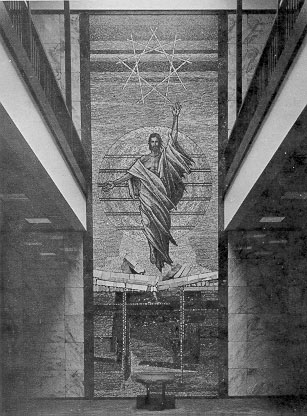
The Resurrection, 1993, mosaic, 33'x11'; Holy Cross Chapel Mausoleum, Holy Cross cemetery, North Arlington, N.J. By Albinas Elskus.
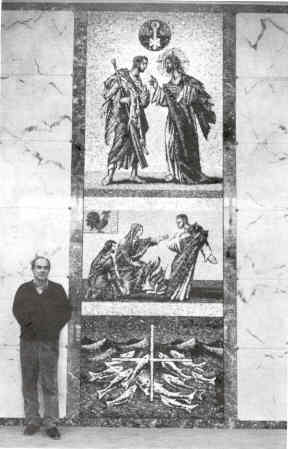
Albinas EIskus standing by his mosaic: St. Peter, 1987, 14'6"x5", Holy Cross Chapel Mausoleum, Holy Cross cemetery. North Arlington, N.J.
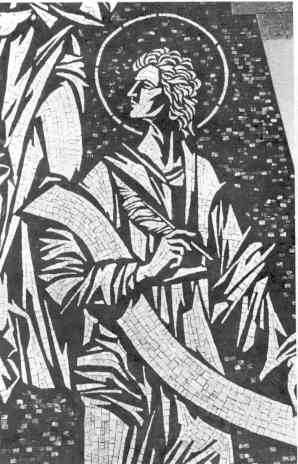
St. John the Evangelist, 1988, mosaic (detail), Holy Cross Chapel Mausoleum. Holy Cross Cemetery, North Arlington, N.J.
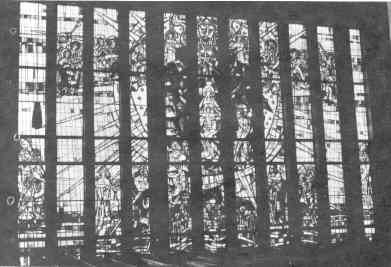
Epiphany, 1960, 30'x45'; Church of the Holy Family, Bronx, N.Y.
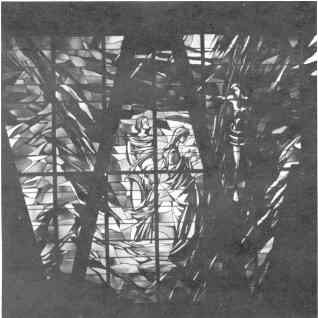
Crucifixion (detail), 1970, stained glass, 16'x75', Church of St. John the Evangelist, Lake Mahopac, N.Y.
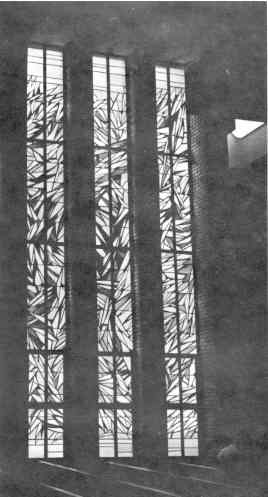
Untitled, 1967, stained glass, 23'xl2'; Church of the Epiphany, New York, N.Y.

The Apple, 1974, stained glass, 90"x20"; in the collection of the Fine Arts museum in Vilnius, Lithuania.
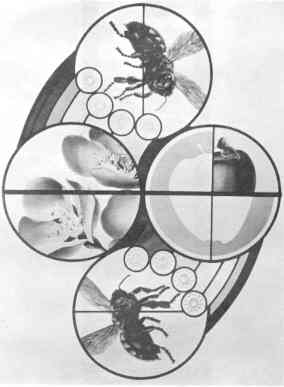
Springtime, 1978, stained glass, 45"x33"; in the Melvyn H. Bergstein collection.
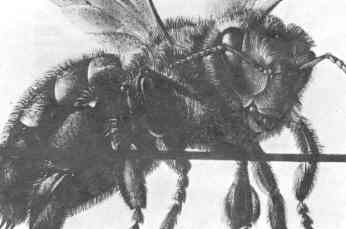
Springtime (detail), 1978, stained glass, 45"x33"; in the Melvyn H. Bergstein collection.
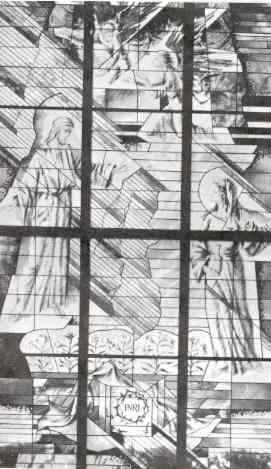
Christ and Mary Magdalene Easter Morning, 1985, 14'6"x8'; mausoleum of The Good Shepherd, Saint Gertrude cemetery, Colonia, N.J.
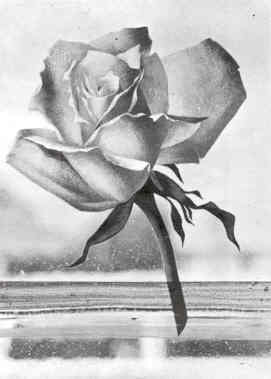
White Rose (detail), 1984, stained glass, 10'x2'6"; Church of St. Elizabeth Ann Seton, Shrub Oak, N.Y.
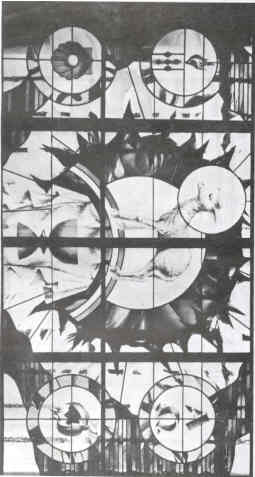
The Lamb, 1985, stained glass, 8'xI2'; mausoleum of the Good Shepherd, St. Gertrude cemetery, Colonia, N.J.